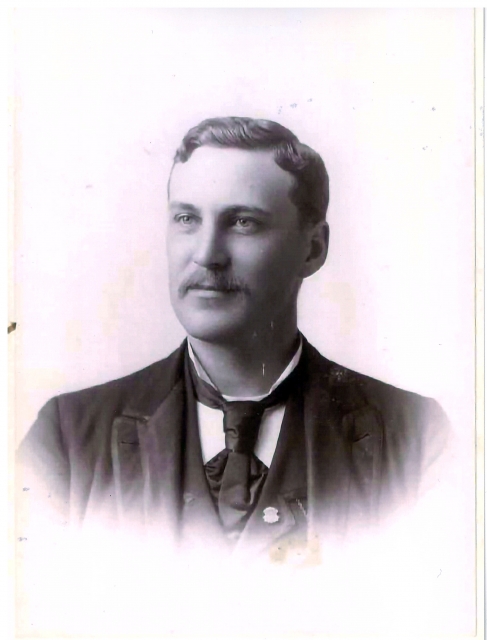
The seventh of eight children of German immigrants, Charles Malchow left the University of Minnesota’s prep school at age fifteen to help support his widowed and disabled mother. At age twenty-seven he began medical studies at the Minneapolis College of Physicians and Surgeons; he graduated first in his class of twelve in 1894. He practiced medicine briefly in Shakopee and twice did further medical studies in Germany and England. There he encountered the work of Havelock Ellis, who began publishing the six-volume series Studies in the Psychology of Sex in 1897.
After returning from Europe, Malchow set up a proctology practice in downtown Minneapolis and started teaching at the Hamline University School of Medicine. In his practice, Malchow observed that many people, especially women, suffered in their lives and marriages from a lack of reliable information about sex. Around the year 1902 Malchow decided to do something about this state of ignorance: write and publish a book about human sexuality. Olly Burton, a medical textbook company representative then based in Minneapolis, agreed to serve as the book’s publisher.
The Sexual Life (dedicated to Malchow’s mother, Marie), appeared in 1904, the same year Maclhow married Lydia Gluek, a daughter of the Minneapolis Gluek Brewing enterprise. The Sexual Life, over 300 pages, described in straightforward language a wide range of sex practices and problems—contraception, youthful experimentation, same-sex attraction, the physiology and psychology of sexual excitement, sexual pleasure, and sexual frustration. The book took particular aim at encouraging equality of knowledge and enjoyment for women and men.
In 1873 Congress had enacted the Comstock Act, which made using the US mail to distribute obscenity (including specifically any information about abortion) a felony. Malchow and Burton knew about the law and inquired of Minneapolis post office officials whether their advertising pamphlet—which described the book in detail—could be sent through the mail. The unhelpful answer merely referred them to the Comstock Act. They took a chance, and mailed 25,000 copies of the pamphlet to doctors, ministers, and lawyers around the country. The book quickly sold 3,000 copies.
![]() In August 1904, just two months after Malchow’s marriage, a Minneapolis federal grand jury indicted Malchow and Burton for violating the Comstock Act. Trial began in October before Judge William Lochren, an Irish immigrant, a Civil War hero (he survived the famous charge of the First Minnesota at Gettysburg), and Minnesota’s second federal district judge. Lochren disapproved of The Sexual Life and made his views known to the jury, who quickly convicted both men. The First Amendment played no part in Malchow’s defense—it had not occurred to anyone at the time that the Constitution might protect the publication of explicit sexuality. And under the law of the time, Malchow and Burton were guilty of the crime.
In August 1904, just two months after Malchow’s marriage, a Minneapolis federal grand jury indicted Malchow and Burton for violating the Comstock Act. Trial began in October before Judge William Lochren, an Irish immigrant, a Civil War hero (he survived the famous charge of the First Minnesota at Gettysburg), and Minnesota’s second federal district judge. Lochren disapproved of The Sexual Life and made his views known to the jury, who quickly convicted both men. The First Amendment played no part in Malchow’s defense—it had not occurred to anyone at the time that the Constitution might protect the publication of explicit sexuality. And under the law of the time, Malchow and Burton were guilty of the crime.
Lochren gave both Malchow and Burton eighteen months in prison, later reduced to twelve. While their appeal made its way to the Eighth Circuit Court of Appeals, Malchow’s supporters appealed to President Theodore Roosevelt for a pardon. They failed: Roosevelt wrote that he found The Sexual Life “a hideous and loathsome book.” The Court of Appeals affirmed the conviction in April 1906; Roosevelt declined the pardon in April; Malchow and Burton reported to Stillwater State Prison in May. They were released in March 1907.
After his release, Malchow returned briefly to the practice of medicine, but he had nothing more to do with the book, which eventually sold some 100,000 copies. In 1913 he and Lydia moved to Santa Monica, California. Dr. Malchow never practiced medicine again, and died from complications of diabetes in 1917.
In 1953 Dr. Alfred Kinsey published Sexual Behavior in the Human Female. That book cited The Sexual Life seven times. The Comstock Act remained the law of the land; but instead of going to prison, Dr. Kinsey appeared on the cover of Time magazine.
For more information on this topic, check out the original entry on MNopedia.


0 Commentaires